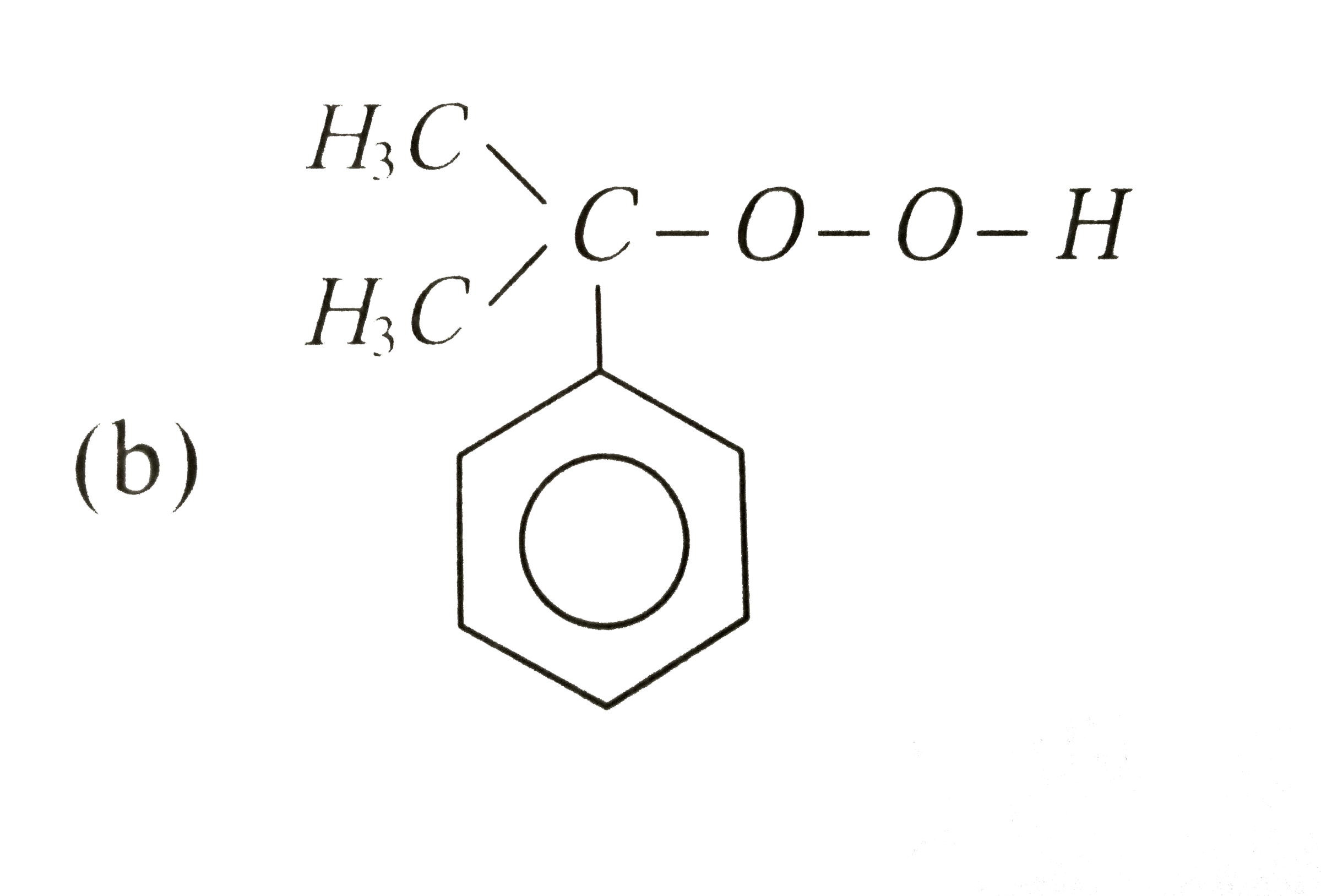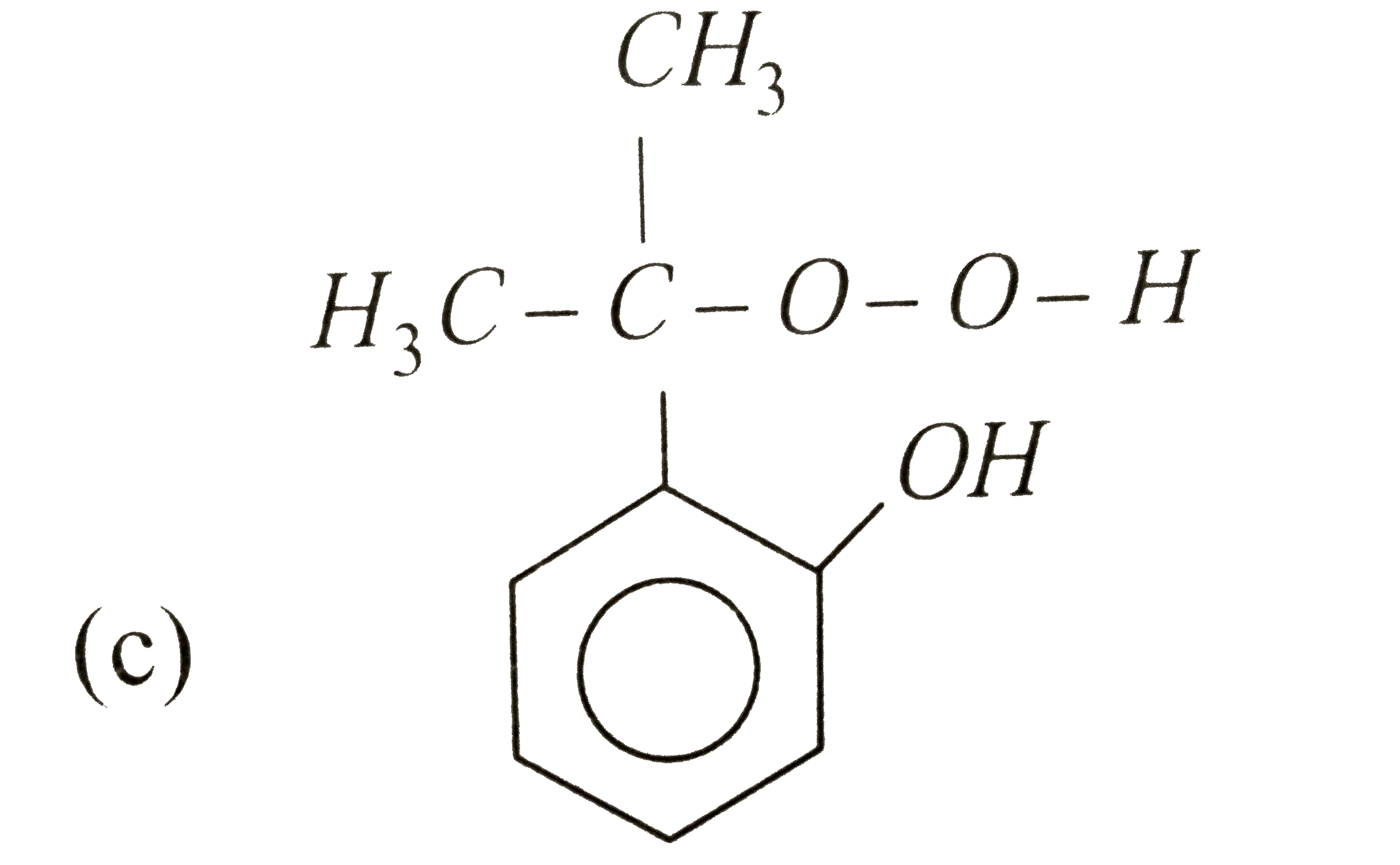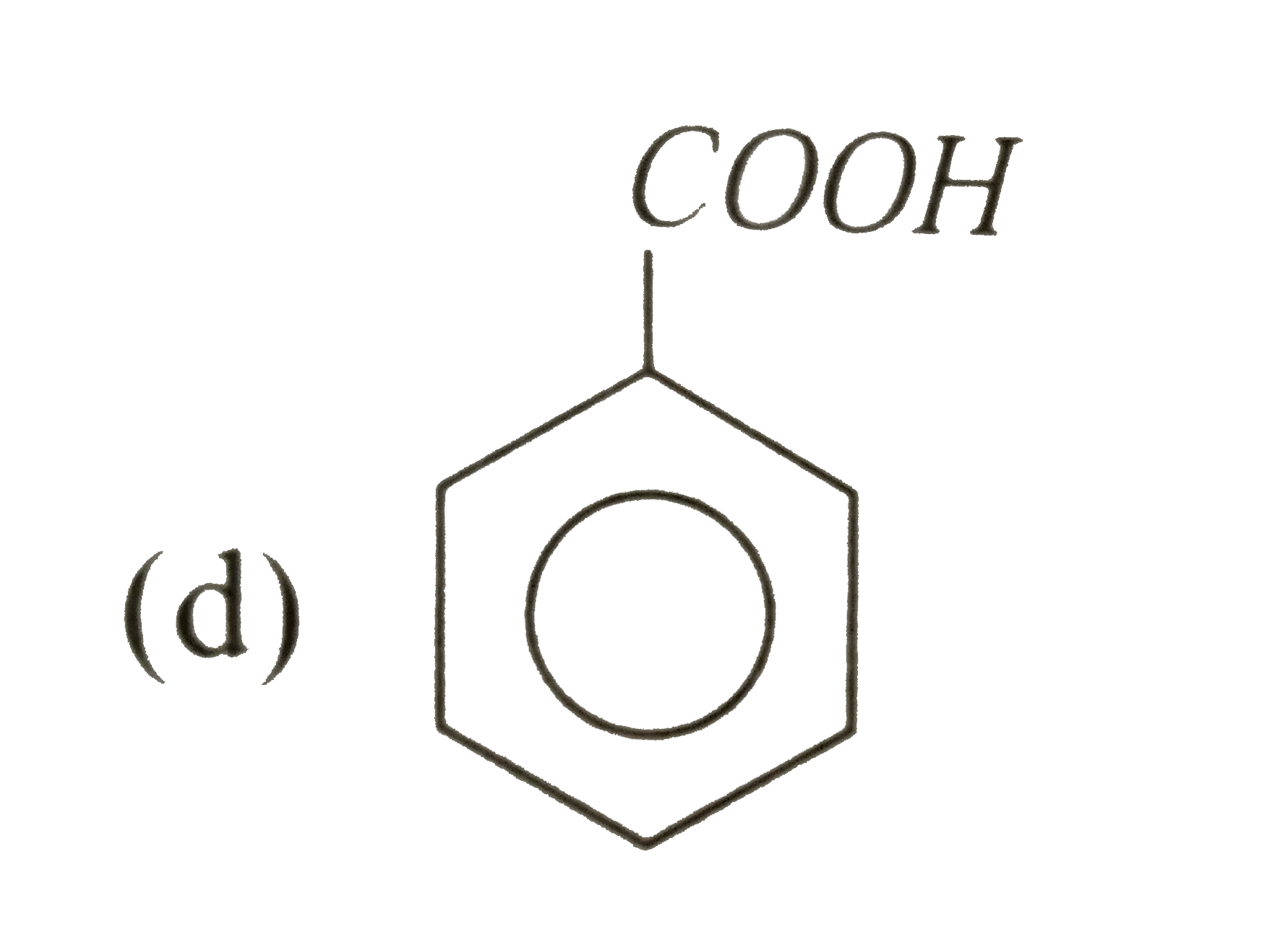An aromatic hydrocarbons A reacts with propene in the presence of anhydrous AlCl3 to give a compound B with a molecular formula C9H12. Further compound B undergoes oxidation in the, presence of air to give hydrogenperoxide C. Compound C decomposes in HCl acid solutions to give compound D and acetone. Identify A,B, C and D. Explain the reactions.
(i) An aromatic hydrocarbon A reacts with propene in the presence of anhydrous AlCl3 to give compound B.

(ii) Compound B undergoes oxidation in the presence of air and hydrogenperoxide to give C.

(iii) Compound C decomposes in HCl acid solution to give compound D and acetone. Identify A, B, C and D. Explain the reactions.

Topper's Solved these Questions
- HYDROXY COMPOUNDS AND ETHERS BOOK - SURA PUBLICATIONCHAPTER - HYDROXY COMPOUNDS AND ETHERS EXERCISE - HOTS
4 Videos
- HYDROXY COMPOUNDS AND ETHERS BOOK - SURA PUBLICATIONCHAPTER - HYDROXY COMPOUNDS AND ETHERS EXERCISE - UNIT TEST (CHOOSE THE CORRECT ANSWERS)
5 Videos
- HYDROXY COMPOUNDS AND ETHERS BOOK - SURA PUBLICATIONCHAPTER - HYDROXY COMPOUNDS AND ETHERS EXERCISE - LONG ANSWERS
11 Videos
- GOVT. MODEL QUESTION PAPER - 2019-2020 BOOK - SURA PUBLICATIONCHAPTER - GOVT. MODEL QUESTION PAPER - 2019-2020 EXERCISE - Part_IV
10 Videos
- IONIC EQUILIBRIUMBOOK - SURA PUBLICATIONCHAPTER - IONIC EQUILIBRIUMEXERCISE - EXERCISE (LOGN ANSWER)
1 Videos
Similar Questions
A nitraite on acid hydrolysis gives compound A, which reacts with thionyl chloride to give compound B. Benzene reacts with compound B in presence of anhydrous AlCl3 to give compound C. The compound B reacts with ethyl alcohol to give ester D. Identify the compounds A,B C and D and write the equations.
View SolutionAn organic compound (A) C8H4O3 in dry benzene in the presence of anhydrous AlCl3 gives compound (B), the compound (B) on treatment with PCl5 followed by reaction with H2/Pd(BaSO4) gives compound ( C ) which on reaction with hdyrazine gives a cyclized compound (D) C14H10N2. Identify (A), (B), ( C ), and (D). Explain the formation of (D) from ( C ).
View Solution
Knowledge Check
Benzonitirle (A) reacts with stannous chloride in the presence of dil HCl to give a reduction product 'B' . Compound 'B' on acid hydrolysis gives compound 'C' . Identify compound 'B' and 'C' . What is the nitration product of compound 'C' ?
ABenzylimine hydrochloride, Benzaldehyde m-dinitrobenzeneBBenzylimine hydrchloride, Benzaldehyde m-nitrobenzaldehydeCBenzylimine hydrochloride, Benzanilide, p-nitrobenzanilideDp-Chlorobenzonitrile , p-chlorobenzaldehyde, p-nitrobenzaldehydeAn organic compound A of molecular formula C2H4, on reduction gives another compound B of molecular formula C2H6 .B on reaction with chlorine in the presence of sunlight gives C of molecular formula C2H5CI .
The compounds A, B and Care:AA: ethene B: ethane C: chloroethaneBA: ethane B: ethyne C: chloromethaneCA: ethyne B: ethane C: chloroethaneDA: ethene B: ethyne C: chloroethanePhenol is distilled with Zn dust followed by Fridel Crafts alkylation with propyl chloride in the presence of AlCl3 to give a compound (B).(B) is oxidised in the presence of air to form the compound (C). The structural formula of (C) is
A B
B C
C D
D
An organic compound A ,C4H4O3 in dry benzene in the presence of anhydrous AlCl3 gives compound B. the compound B on treatment with PCl5, followed by reaction with H2/Pd(BaSO4) gives compound C, which one reaction with hydrazine gives a cyclised compound D (C10H10N2) . identify A,B,C and D. Explain the formation of D from c.
View SolutionAn organic compound (A) C8H4O3 , in dry bebzene in the presence of anhydrous AlCl3 gives compound (B ). The compound (B) on treatment with PCl5 followed by reaction with H2/Pd(BaSo4) gives compound (C ) which on reaction with hydrazine gives a cyclide compound (D) (C14H10N2). Identify (A), (B) (C ), and (D) Explain the formation of (D ) from (C ).
View SolutionAn organic compound (A),C8H4O3 in dry benzene in the presence of anhydrous AlCl3 gives ,compound (B). The compound (B) on treatement with PCl5 followed by reaction with H2/Pd−BaSO4 gives compound C, which on reaction with hydrazine gives a cyclised compound (D) of formula C14H10N2. Identify (A),(B),(C ) and (D). Explain the formation of (D) and (C ).
View SolutionWhen an oxide of manganese (A) is fused with KOH in the presence of an oxidising agent and dissolved in water, it gives a dark green solution of compound (B). Compound (B) disproportionates in neutral or acidic (C ) oxidises potassium iodide solution to a compound (D) and compound (A) is also formed. Identify compounds A to D and also explain the reactions involved.
View SolutionWhen an oxide of manganese (A) is fused with KOH in the presence of an oxidising agent and dissolved in water, it gives a dark green solution of compound (B). Compound (B) disproportionates in neutral or acidic (C ) oxidises potassium iodide solution to a compound (D) and compound (A) is also formed. Identify compounds A to D and also explain the reactions involved.
View Solution
